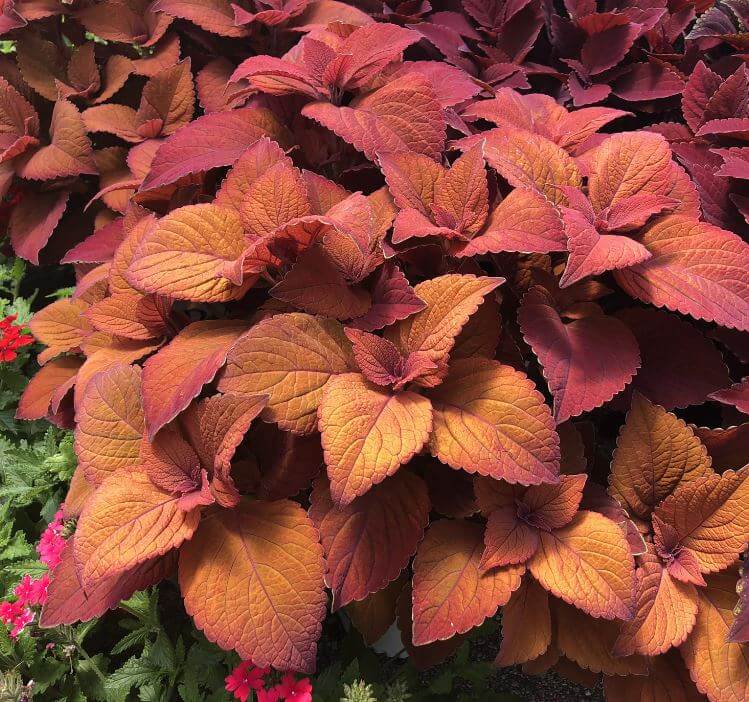Last Updated on April 24, 2023 by a Friendly Gardener
Looking for a spectacular burst of color for your garden or favorite planter? Then consider a
Solenostemon Scutellarioides ‘Sedona Sunset’ is now referred to as the Plectranthus Scutellarioides and specifically the Sedona Sunset Coleus plant. Phenomenally colored foliage distinguishes this heat-tolerant beauty belonging to the Lamiaceae family. Karl Ludwig Blume (1796-1862) is credited with discovering these plants in Java, which was a Dutch colony, but they are thought to be tropical natives of Asia and Australia.
The precise origin of the Coleus is unknown as these plants have been used as ornamentals since before Victorian times. They gained enormous popularity in the Victorian era and were often seen embellishing parlors, windows, and conservatories.
Generally speaking, coleus varieties are available in multiple colors, shapes, sizes, and textures with many having noteworthy tolerance to both sun and heat. The intensity of foliage color is influenced by the environmental conditions where cultivation takes place which include heat, sunlight, and soil quality.
Ideal for outdoor cultivation in USDA hardiness zones 10 and 11, this plant flourishes in conditions that range from full shade to full sun, but partial sun to partial shade will protect color intensity. With a rapid upright growth habit, the Sedona Sunset plant can grow from two feet to just over three feet in height and spread from a foot and a half to three feet.
Foliage features a fiery coppery-orange color that characterizes this coleus variety making it a popular choice for outdoor gardens, yet it can be cultivated as a houseplant. An herbaceous annual, this coleus is known to be low maintenance and is commonly employed as garden border plants or for mass-planting as bedding. The Colorblaze Sedona Sunset variety is a delightfully reddish-orange and coppery exemplar that is a copyrighted cultivar brand from Proven Winners.
It is not considered a true annual but will behave as one depending on the climate. When left outside in winter climates, it will need to be replaced. The Sedona Sunset plant is deer resistant for those gardeners that regularly battle with local wildlife.
Sedona Sunset Coleus Plant Care
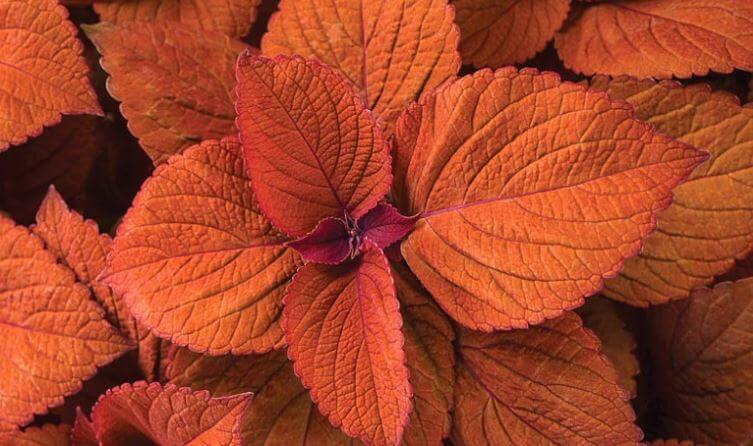
Rich soil, ample light, and generous watering will maintain a Sedona Sunset in a tiptop shape both in garden beds and in container cultivation. While this plant will bloom, it is cultivated specifically for its colored foliage.
Soil
While this plant can manage in loamy, clay, sandy, or chalky soils, it will perform best in well-draining, fertile loamy soil. Garden bed soil may be amended with aged manure or compost to improve aeration and fertility. Soil pH should measure between 6 and 7 or a bit acidic to neutral. Space plants from twelve to eighteen inches apart to guarantee adequate air circulation. Apply mulch an inch away from the plant’s base to aid in moisture retention and discourage weed invasion. Do not allow mulch to come into contact with plant stems to prevent rotting.
If you are container cultivating, use a quality potting mix with some water retention capabilities but with excellent drainage.
Light
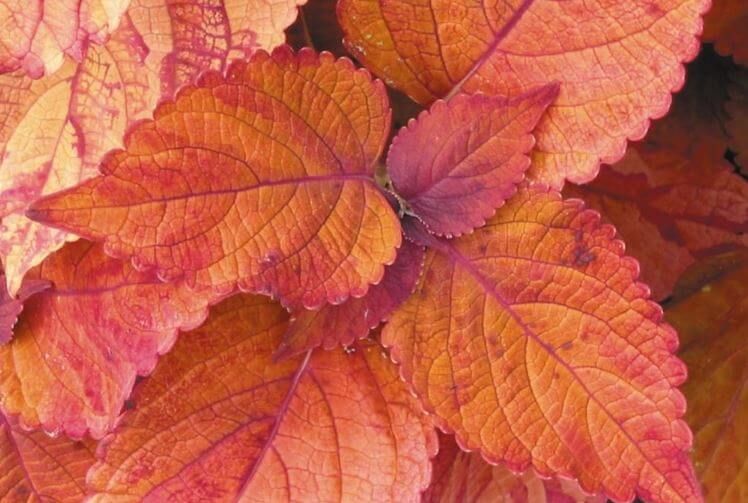
Coleus varieties can support various lighting conditions. Some will depend on the specific coleus cultivar. Ideally, this Coleus variety will thrive best in partial shade as harsh direct sunlight can cause the color of foliage to fade. They can be cultivated in the direct sun if an adequate water supply is provided. Select a spot in your garden that offers some shade.
Water
Coleus varieties require soil that is kept consistently moist, so they require a regular watering schedule. Soil can be allowed to dry slightly but never completely between waterings. Overwatering can lead to root rot. Indoor houseplant cultivation may require more frequent watering. To prevent soil from becoming soggy, use a clay or terracotta pot to wick away excess moisture.
Humidity
Coleus prefers high humidity levels, so indoor houseplants should be in a room like a bathroom or a kitchen. In other rooms consider positioning a space humidifier or a pebble tray beneath the plant container to raise home humidity levels.
Temperature
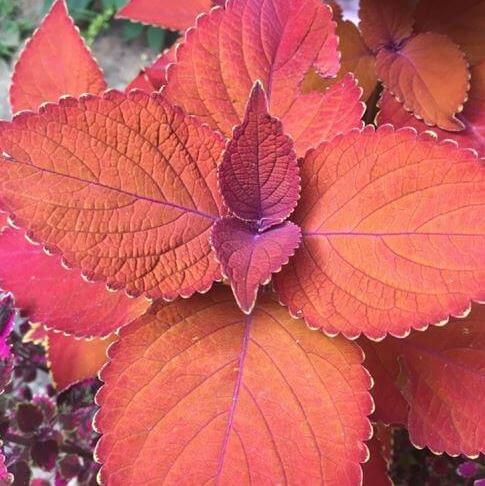
An average temperature in the zone of 60°F. is ideal or indirect light or partial shade in warmer weather. Winter temps should not descend below 50°F.
Outdoor coleus plants are generally cultivated as annuals, but you can overwinter them if you reside in a colder region. Before the arrival of the season’s first frost, remove the entire plant and transplant it into a container. Place your plants in a warm, sunny location indoors, but reduce watering during the winter season. Before you return your plant to the garden bed, acclimate it gradually on a porch, patio, or balcony to outdoor conditions.
Feeding
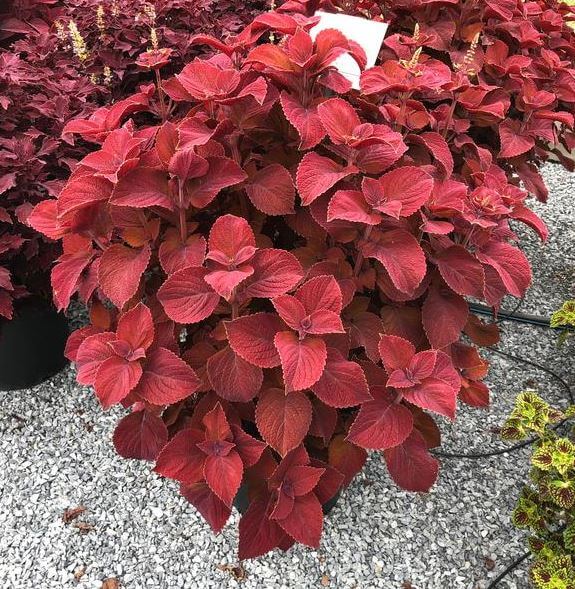
The Sunset Coleus plant will appreciate a nutritional boost, so fertilize with balanced liquid fertilizer monthly during the growing season. Consider diluting the fertilizer to half its strength to avoid damaging root systems.
Pruning
To encourage bushier plant growth, pinch off flower spikes, so that the plant concentrates its energy on foliage. This plant’s growth habit can become unruly, so regular pruning will help maintain its shape.
Sedona Sunset Coleus Propagation

This Coleus variety can be grown using seeds or stem cuttings. If intended for use in an outdoor garden, they should be planted eight to ten weeks ahead of the final projected frost date. If you are planting established plantlets acquired from a garden center or nursery, do so after the final frost has passed and when temperatures remain consistently above 50°F.
To propagate from a mature plant, look for stems on a healthy plant that are not flowering. Trim a six-inch stem section below a leaf node and remove all foliage from the bottom half of the cutting. Retain only top leaves. To better your chances, dip the cut end in the rooting hormone. Place the cutting in a container with quality potting soil or a blend of half peat and half perlite and moisten. Cover your cutting with a plastic bag to ensure humidity. You can also use a glass dome or jar. Foliage should not touch the cover.
Place your cutting in a spot with generous indirect light and a temperature averaging approximately 70°F. When the cutting has developed roots (approximately two to three weeks), it can be transplanted into the garden or another container.
Sedona Sunset Plant Problems
Coleus varieties are susceptible to a few diseases and are subject to typical houseplant infestations. Diseases include root rot downy mildew, and powdery mildew. These are fungal infections that are generally caused by causes created through overwatering or poor soil drainage. In the case of root rot, watch for yellowing leaves, wilting, and a foul smell that leads to the eventual death of your plant.
Downy mildew manifests itself with yellowing leaves and purplish-gray spore spots on leaf undersides. Do not water your plant overhead and guarantee good air ventilation. Treat your plant with a fungicide.
Powdery mildew creates a powdery whitish covering on foliage that will distort growth and cause foliage to drop. Like downy mildew, avoid overhead watering, guarantee air circulation, and remove any infected leaves. Use a fungicide like potassium bicarbonate or neem oil.
Pests to watch for include aphids, whiteflies, spider mites, mealybugs, and particularly snails and slugs outdoors. Aphids, whiteflies, spider mites, and mealybugs can be removed with jet water spray followed by the application of insecticidal soap or neem oil. Slugs and snails should be removed manually and contrasted using slug traps, copper tape, or diatomaceous earth.
Sedona Sunset Coleus Toxicity
The Sedona Sunset plant is toxic to cats, dogs, and horses. Poisoning symptoms can include drooling and pawing at the mouth, face and mouth irritation, diarrhea, breathing difficulties, a drop in body temperature, weakness, vomiting, and a loss of appetite. Call your veterinarian for suspected ingestion.

